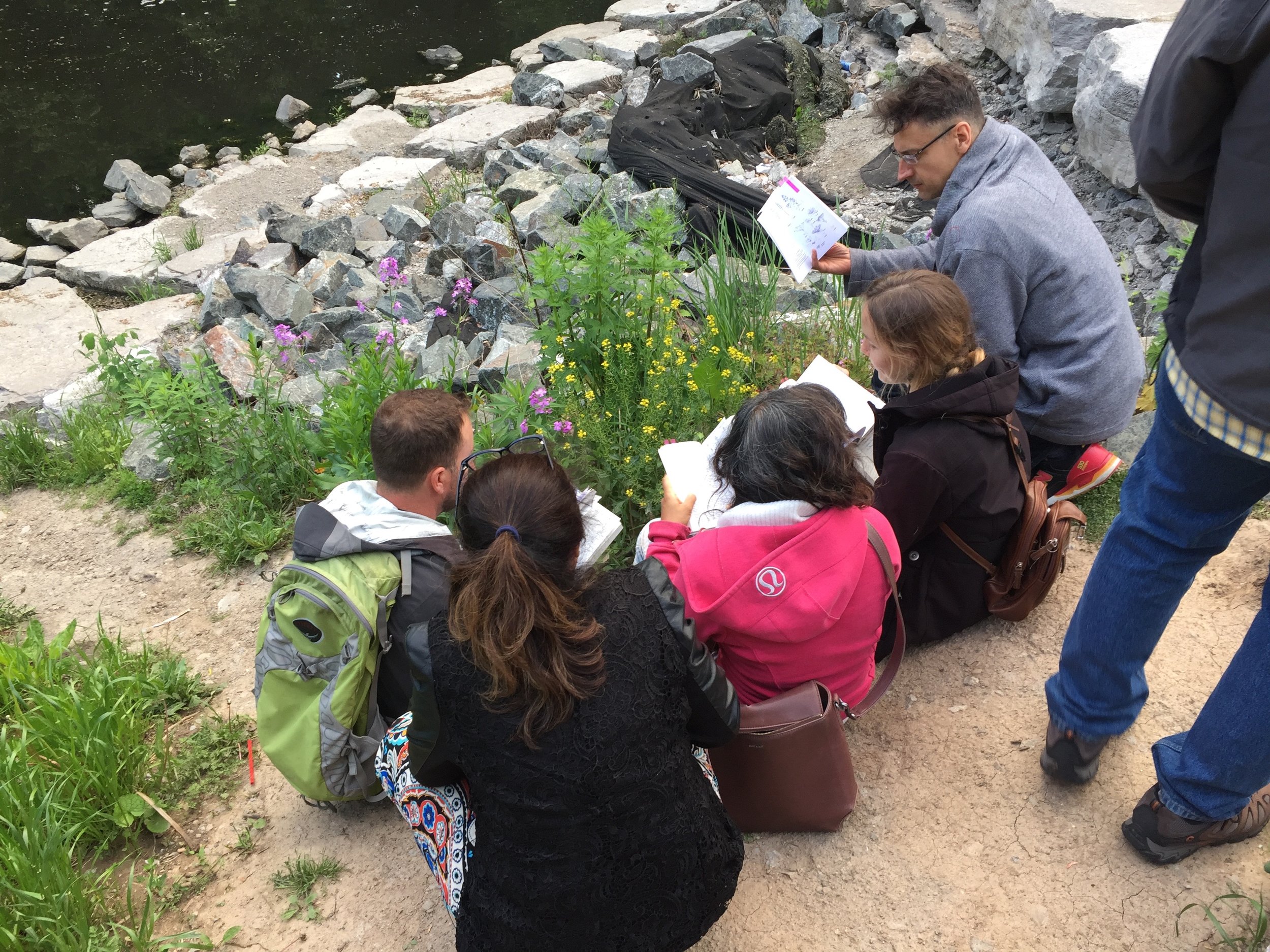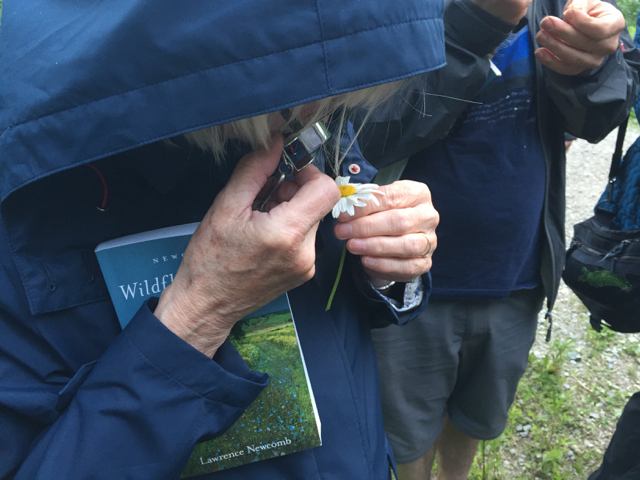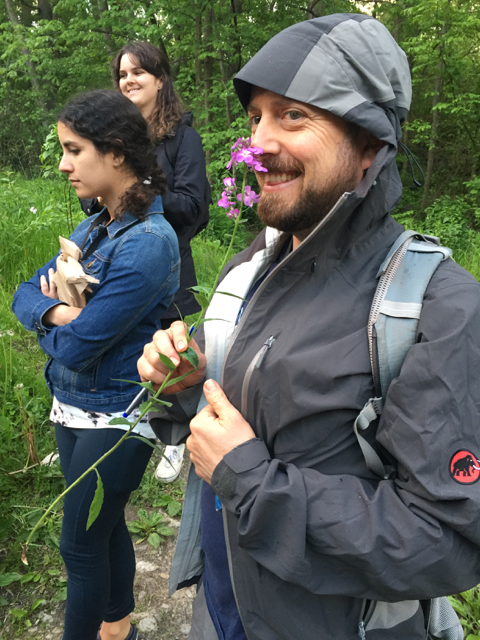I took a workshop with Richard Aaron at the High Park Nature Centre and practiced using the Newcomb's Field Guide to identifying wildflowers.



Among the species identified in early June were:
Motherwort(Leonurus cardiaca) JapaneseKnotweed (name in Newcomb’s: Polygonum cuspidatum – nowcalled Fallopia japonica) YellowWood Sorrel (Oxalis europaea) PoisonIvy (name in Newcomb’s: Rhus radicans – now called Toxicodendronradicans) Hairy Beardtongue (Penstemonhirsutus) White Clover (Trifoliumrepens) Black Medick (Medicagolupulina) Shepherd’s Purse (Capsellabursa-pastoris) Pineapple Weed (namein Newcomb's: Matricaria matricarioides – now called Matricariadiscoidea) Yellow Avens (Geumaleppicum) Common Fleabane (akaPhiladelphia Fleabane) (Erigeron philadelphicus) Garlic Mustard (namein Newcomb’s: Alliaria officinalis – now called Alliariapetiolata) Celandine (Chelidoniummajus) (called Greater Celandine is some field guides to distinguishit from Lesser Celandine, which is an unrelated plant) False Solomon's Seal(Smilacina racemosa) Pale Swallowwort (Cynanchumrossicum) – not in Newcomb’s, Wild Geranium (Geraniummaculatum) Wild Lupine (Lupinusperennis) Wild Sarsaparilla (Aralianudicaulis)